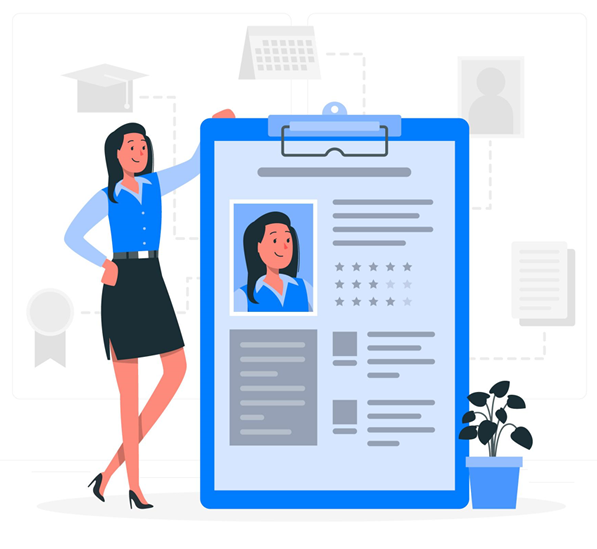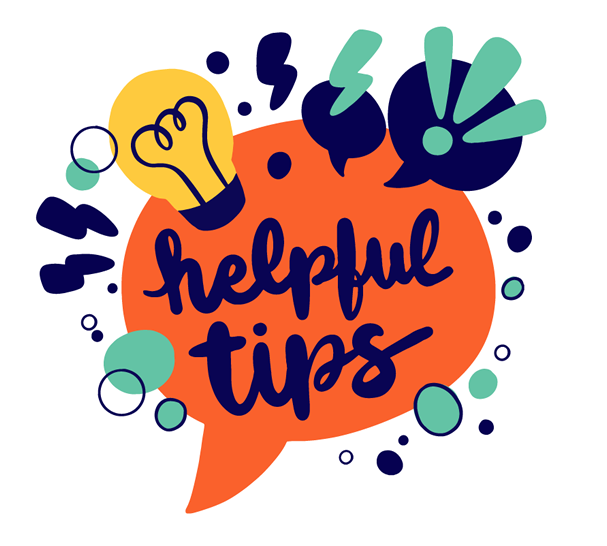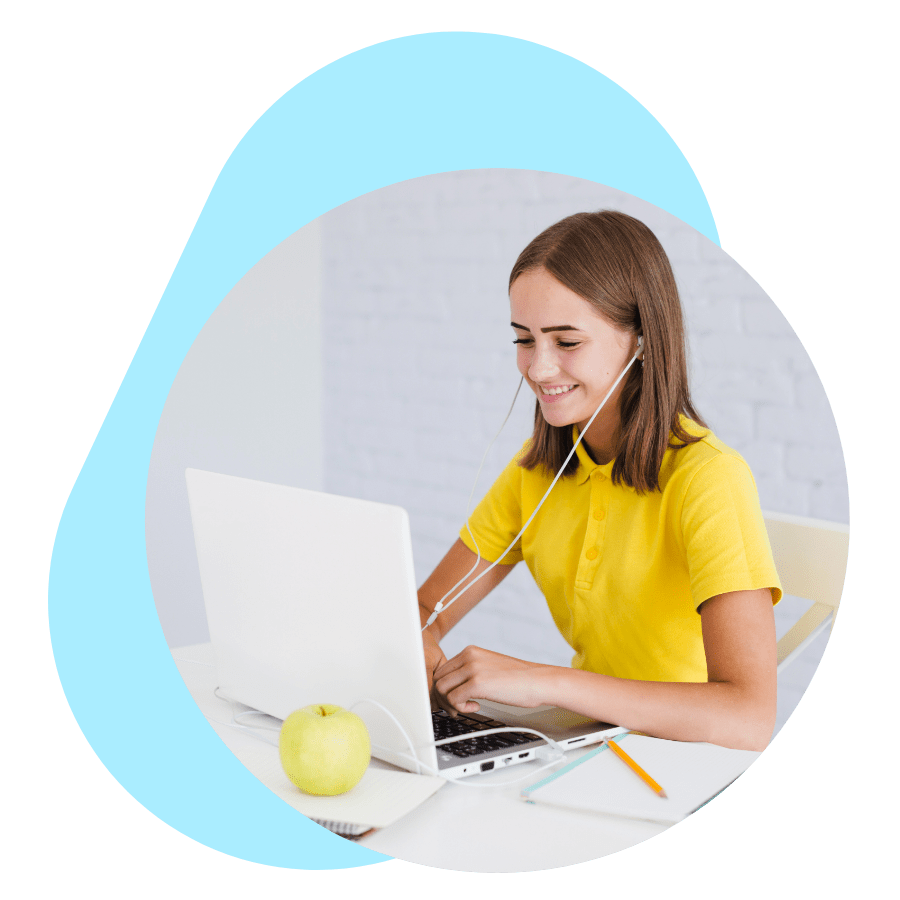1- Introduction
You will read a dialogue set on a job interview. There are three characters: the recruiters, Sara and Juan; and the candidate applying for a job, Samantha.

Sara: Good morning, Samantha. I am Sara, the Human Resources manager. This is Juan, our psychologist.
Juan: Good morning. We are going to ask you some questions. Are you ready to start?
Samantha: Certainly.
Sara: Tell us about your last job, according to your résumé, you worked as a bilingual hotel receptionist for two years. Can you describe some of your main responsibilities?
Samantha: Sure. I was in charge of booking rooms, registering check-ins and check-outs, and taking messages for hotels guests. Additionally, I was put in charge of the reception staff while the manager was on vacation.
Juan: Excellent! What did you learn from that experience?
Samantha: I learnt to react to situations in a much more efficient way. For instance, when there was a problem with booked rooms, I had to find quick solutions to keep clients.
Sara: Certainly impressive! We definitely need problem-solving skills to work in a hotel.
Juan: Aside from your problem-solving skills, how do you think you can contribute to our hotel?
Samantha: I am willing to learn from every experience. Additionally, I am very organized and ready to be challenged. I will do my best to exceed your expectations.
Sara: Well, I think we do have all the information needed. I don’t have further questions. What about you, Juan?
Juan: Neither do I. Thank you for your time, Samantha. We will contact you on Friday to let you know if you move on to the next phase or not.
Samantha: Thank you so much for your time. I will be looking forward to hearing from you.
|
Reflection: How do you think Samantha did in the interview? Would you change anything from her answers? Write any suggestions that come to your mind in order to keep them in mind for future reference. |
2- The Importance of a Résumé
You are going to read a text regarding the most salient aspects of résumés or curriculum vitae. The sections will be divided as follows:
– What is a résumé?
– Relevant Information in a CV.
– Irrelevant Information in a CV.
– Lack experience? Highlight your strong points.
– Different job positions, different.
2.1- What is a résumé?
A résumé or curriculum vitae is the document you compose in order to deliver important information about yourself to target employers. The main purpose of the résumé is to get noticed.
Looking for a job can be a scary and sometimes long process. First, you send your curriculum vitae to a company. If your CV matches the job position, you get a call or email to meet you in person or through a videocall. During that job interview, you get asked questions related to your background education, experiences, and so on. Finally, if you did well in the interview, they should let you know you were selected for the job position or not.
From a cultural point of view: curriculum vitae or résumé?
|
British English (United Kingdom)
|
North American English (United States)
|
|
Curriculum vitae (or CV) Word origin: From Latin ‘course of life’. |
Résumé (also, the word résumé is usually spelt without the accent marks i.e., resume). Word origin: From French ‘summary’. |
The CV is usually a formal document; hence, the format really matters. A good piece of advice is to create different CVs for prospective employees. For instance, if you want to apply to a multinational company, prepare a semi formal CV in English; but if you want to apply to a conservative local company, prepare a formal CV in Spanish, etc.

2.2- Relevant Information in a CV
The pieces of information delivered in a résumé mainly relate to how recruiters can contact candidates, learn about the candidate’s studies and courses, skills and abilities, and the work experience the candidate has. Hence, a CV is mainly composed by five parts:
– First of all, the Introduction. This section must be brief in order to introduce yourself. Hence, you can write your full name1 on one line, and then you can write your most important job position or qualification2. If you want, you can add some salient details in a short biography3. Just remember to be concise.
For example:
|
Samantha Linares Díaz1 Bilingual Receptionist (English/Spanish)2 I am a hard-working person, who is always oriented to help customers and companies communicate effectively.3 |
– Second, Contact information. This part should emphasize how companies or recruiters can contact you, namely your phone number, email address, website, and profile in LinkedIn (in case you have created one).
|
Contact Information Phone number: +56 9990009990 Email: [email protected] |
– Third, Education. This section should deal with the most important information regarding your studies and courses. For example, the degrees or diplomas you have, the courses you have taken, and so on.
|
Education 2010-2012 Computer Science Diploma Community College of Porvenir 2013-2014 Human Resources Management Course Instituto Profesional de Cabrero 2020-2021 English Course (B1) English Institute of Santander |
– Fourth, Skills and Competences. This section usually highlights your strengths to deal with situations regarding the working world. For instance, you can add some abilities like speaking a second language (or even more languages), the computer software you can manage, the fact that you are good at teamwork, how resourceful you are in given situations, and so on. Also, you can give a short example of how those skills have been beneficial in the past. You can organize your skills by using bullet points. For example:
|
Skills & Competences • Leadership. Experience managing work groups of 5 or less workers. • Empathy. Being able to listen to others and offer them support. • Communication skills. Experience communication customers’ needs and finding proper solutions. |
– Fifth, Work Experience. This section must include all the relevant information regarding your previous jobs: company name, date range (i.e. when you started working and when you finished working), job position, main responsibilities, relevant achievements, and so on. For example:
|
Work Experience 2013-2015 Supermarket Cashier My main functions were helping clients find the products they needed, using the cash register, and recording money transactions. 2016-2019 Personal Assistant I was in charge of organizing the main events and doctors’ appointments in a private clinic. 2020-2022 Bilingual Receptionist Desk receptionist in charge of managing check-ins and check-outs in an international hotel. |
Now, let’s see an example of how the information provided in the sections above would look like or might be organized in a CV:
|
Samantha Linares Díaz Bilingual Receptionist (English/Spanish) I am a hard-working person, who is always oriented to help customers and companies communicate effectively. |
|
|
Contact Information Phone number: +56 9990009990 Email address: [email protected]
|
Education 2010-2012 Computer Science Diploma Community College of Porvenir 2013-2014 Human Resources Management Course Instituto Profesional de Cabrero 2020-2021 English Course (B1) English Institute of Santander |
|
Skills & Competences • Leadership. Experience managing work groups of 5 or less workers. • Empathy. Being able to listen to others and offer them support. • Communication skills. Experience communication customers’ needs and finding proper solutions.
|
Work Experience 2013-2015 Supermarket Cashier My main functions were helping clients find the products they needed, using the cash register, and recording money transactions. 2016-2019 Personal Assistant I was in charge of organizing the main events and doctors’ appointments in a private clinic. 2020-2022 Bilingual Receptionist Desk receptionist in charge of managing check-ins and check-outs in an international hotel. |
|
Glossary Recruiter (noun): a person whose job is to find new people to join a company, an organization, etc. Candidate (noun): a person who is trying to be elected or is applying for a job. Salient (adjective): most important or easy to notice Concise (adjective): giving only the information that is necessary and important, using a few words. Resourceful (adjective): good at finding ways of doing things and solving problems. Indistinctly (adverb): in a way that is not totally clear. Accent mark (noun): (Also referred to as diacritic) a mark such as an accent, placed over a letter in some languages like Spanish, to show that the letter should be pronounced in a different way from the same letter without the accent mark (in Spanish it is called tilde). Bullet points (noun): items in a list in a document printed with a symbol (diamond, circle, point, etc.) in front of them in order to show that it is important. Achievement (noun): a thing that somebody has done successfully, especially using their own effort and skill. Prospective (adjective): potential; expected to become something. Make up (verb): to invent something, especially in order to trick somebody. Willingness (noun): the quality of being happy and ready to do something. |
2.3- Irrelevant Information in a CV
Although a résumé is a formal document that we use to introduce ourselves to prospective companies, there are some pieces of information we can and should omit. However, the decision of providing this information or not will completely depend on you.
a) Your ID or passport number. They refer to the identification document number given by governmental offices. This information should only be included if the company you are applying to requests it. However, there are some companies that asks for that information when the candidate has already been contacted or interviewed.
b) Your age, gender, marital status, religion, sexual orientation, if you have children or not, etc. Those pieces of information are personal but not really related to the working world.
c) Your exact home address. Although you can include the city you currently live in, try to avoid giving your exact address to protect your privacy.
d) Your kindergarten and/or primary education. Try to include only your more relevant and more recent studies. For instance, if you went to the university and obtained a bachelor’s degree, your secondary education will be irrelevant.
e) Your bank account details. This information will be required only when you have been officially hired and after signing the contract, so that you can get paid, in other words, receive your salary.
2.4- Lack experience? Highlight your strong points
In case you do not have much working experience, you can change the focus of your CV. Instead of making up experience, you can highlight your strengths i.e., your skills and competences. For instance, if you are applying for your first job as a waitress/waiter, you can emphasize that you are organized and proactive.

2.5- Different job positions, different CVs
This is a crucial piece of advice: compose different CVs for different job positions. Also, do not forget to add all the working experience related to the job position you are applying for.
For example:
This is Charles, a university student. He is applying for a part-time job as a waiter and as a hotel receptionist. Since both jobs require communication skills and speaking English, the “Skills and Competences” section should be similar in both résumés. However, if Charles has experience working in a call center, he should include that experience in the CV he will send for the hotel receptionist job.

So, as you can see, you can write different CVs for different job positions and companies as well. Read the tips below before composing your résumé(s):
|
|
a ) Include working experience related to the area or job you are applying to. Recruiters pay attention to candidates whose work experiences match the job position they need to fill. Hence, you are more likely to be noticed. b) Research the company you are applying to. This way, you can have an idea of the company’s values, vision, activities, and so on. c) Do not lie in your résumé! If you lack experience or studies, you can compensate that fact with your willingness to learn or another skill or ability. |
|
d) Keep it short. According to Forbes (2021), a good résumé should catch the reader’s attention in 20 seconds or less! Hence, if you write long sentences or paragraphs, probably nobody will read your CV. Also, the recommendation is to cover 1 or 2 pages, no more than that; otherwise, the recruiters are likely to never read it. Hence, you might never get a job interview. |
|
3- Suggested Activity
Compose a resumé for any of the job positions described in the situations A to C.
|
A. You want to apply for an illustrator job in an Australian publishing house. You might be in charge of designing book covers for children’s books. |
|
B. You want to apply for a translator job in a Japanese food company. You might be in charge of translating legal documents and product descriptions. |
|
C. You want to apply for a cook job in a Thai food Restaurant. You might be in charge of designing the menu and purchasing products using different languages. |
You can send the answer (in a Word or PDF document) to either: your English Teacher during the lesson related to this content; or to the Online English Teacher, in case you want to do this activity earlier on. Although this activity is not mandatory, we encourage you to do it, so that you can improve your writing skills.




